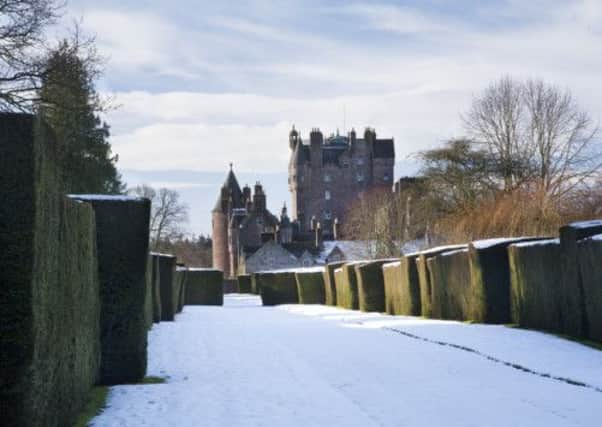Glamis Castle gardens: A snapshot of Scots history


Glamis Castle, the home of the Bowes-Lyon family in Angus, is well known as the childhood home of Her Majesty Queen Elizabeth, The Queen Mother.
What is less well known, however, are the splendid gardens laid out close to the castle that reflect the taste of generations of the same family while offering a snapshot of Scottish history.
Advertisement
Hide AdAdvertisement
Hide AdThe scene set immediately on arrival is an evocative one. The impressive towered and turreted castle, parts of which date from the 15th century and which boasts earlier royal connections, sits at the foot of a lime and oak-lined avenue flanked by fields of grazing cattle. The surrounding parkland is backed with policies punctuated with varieties of mature trees.
Head gardener Chris Stephenson explains the origins of the present gardens. “In 1772, after a hurricane blew down many of the trees, the old parterres and formal gardens were swept away from the front of the castle and replaced with the existing landscape.”
A century later, Cecilia, wife of the 14th Earl of Strathmore, mother to Her Majesty the Queen Mother and a keen gardener herself, designed two classical parterres. Although both gardens are planted for year-round interest, their formal box layout design looks spectacular in winter when rimmed with frost or snow.
The first garden, a Dutch parterre, named for its original planting of bulbs, is situated in front of the low, east wing of the castle. Entered through a gateway flanked by lion-topped pillars, the rectangular Dutch parterre was inspired by the knot garden at nearby Edzell Castle. It features a geometric pattern of box-edged beds separated by gravel paths.
The two-acre Italian garden a short walk away was inspired by the Countess’s love of formal Italian gardens. Laid out in a design of 12 fan-shaped beds with a stone fountain as the focal point, this garden became a favourite of the Queen Mother as a child. She would enter through a wooden side gate to stroll along the raised stone walk between the two 17th century style gazebos. After more than 100 years, the gazebos still stand although the wooden gate was replaced in 1980 with a wrought iron gate commemorating the Queen Mother’s 80th birthday.
Another striking feature of the Italian garden is the off-centre pleached beech walk that forms a tunnel in the shape of a tent on stilts. Chris suspects the beech was left to grow unchecked during the Second World War allowing the two parallel rows to meet. Recently installed under Chris’s supervision is the series of elegant stone statues which now furnish the outer perimeter hedge of the garden.
Here too Chris and his team plant beds to ensure year-long interest. Height has been added to the rear bed by the introduction of tall, wooden obelisks. These elegant features also appear in the four-acre walled garden. It’s a short walk but Chris uses a smart, red monogrammed all-terrain vehicle to move around the castle at speed. This “mule” takes us along the yew-flanked path that leads from the east façade of the castle to the elegant Greek-style pavilion, built in memory of the late Princess Margaret, born at Glamis on a stormy night in 1930.
Sharp left and the path continues through woodlands; the Strathmore family have always had an interest in wildlife and the present Lord Strathmore is no exception. Red squirrels are often seen here. The path takes you through a magnificent stand of mature North American conifers, some more than 150 years old.
Advertisement
Hide AdAdvertisement
Hide AdCrossing the Earl Michael Bridge takes you up a slope towards the four-acre walled garden. Entered through a magnificent wrought iron gate, this exciting space is under restoration. The project was kick-started four years ago by the introduction of a raised, circular fountain placed at the centre of the garden.
Here Chris recently planted the generous, parallel borders that frame the vertical path. On a tight budget, many plants were grown from seed; the annuals providing colour and vibrancy as well as being valuable for weed suppression.
Currently there are no plans to replant the rectangular grass spaces behind the paths, but a compact vegetable garden has been laid out to the side of one of the Victorian glasshouses. Chris says: “Tom Belcher, the new gardener, has met with the chef of the castle restaurant and will be working with him to produce the vegetables and herbs he needs.”
Chris and his team are motivated and highly enthusiastic. “We have made a great start to the gardens and demonstrated what we can do,” he says. “The pace is picking up now and we look forward to the second phase of the gardens which will go a long way towards enhancing the visitor experience in the future.”
• Photographer Ray Cox has his own website at www.rcoxgardenphotos.co.uk.
Glamis Castle reopens in April 2014.
For more information, tel: 01307 840393, or email [email protected]; www.glamis-castle.co.uk